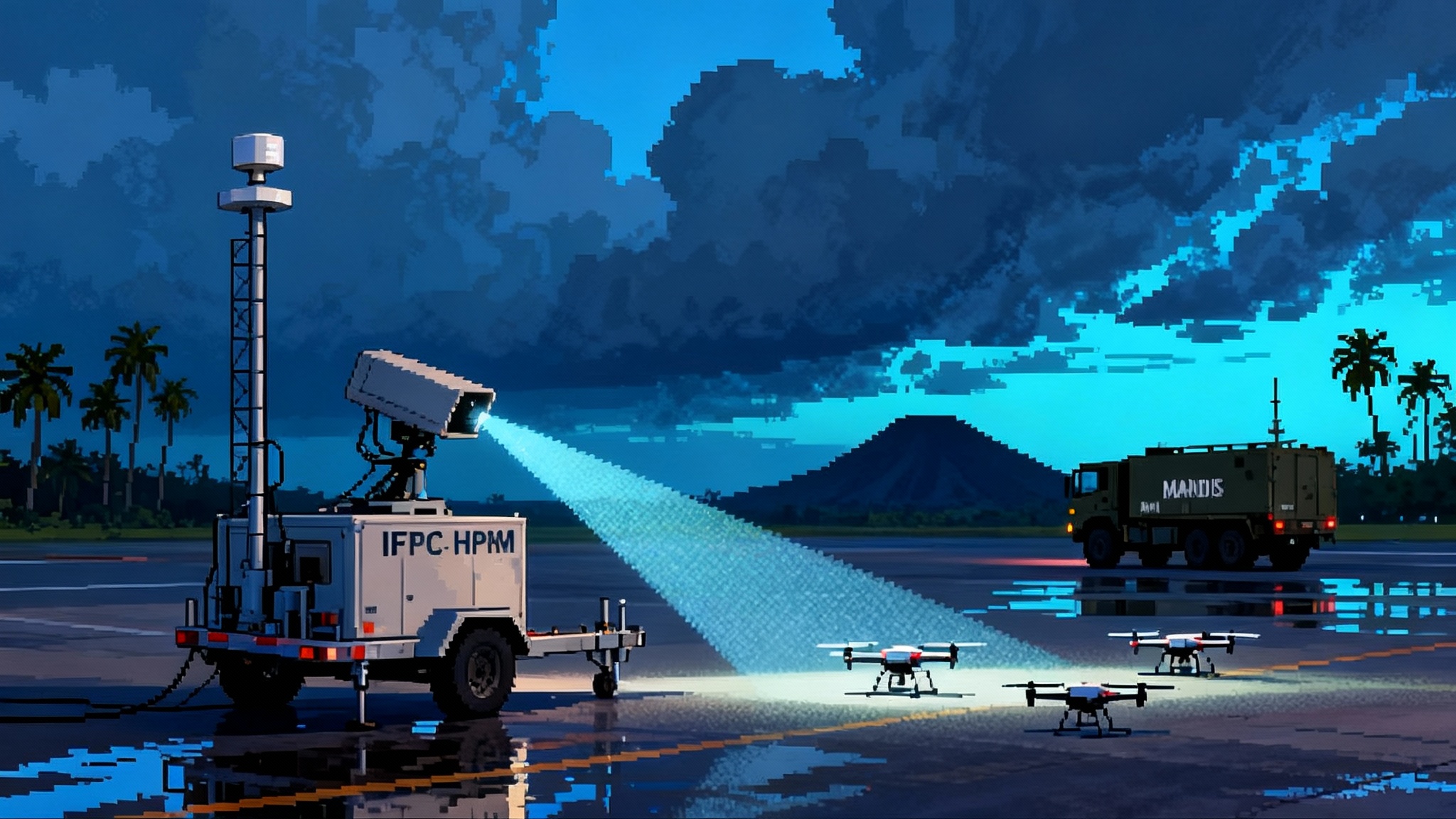Pentagon's Replicator Reset: DAWG, delays, and the race for AI mass
Replicator set out to deliver autonomous mass by 2025. Instead, timelines slipped and stewardship reportedly shifted to DAWG under SOCOM. Here is what stalled, what can still be fixed in 12 to 18 months, and what it means for Pacific timelines.

The reset moment
Two years ago, Replicator promised to prove that the Pentagon could deliver AI‑enabled mass at wartime speed. The target was clear: field capabilities at scale within roughly 18 to 24 months and make swarming, attritable autonomy real in contested air, sea, and land. Now, as the 2025 window closes, public reporting indicates Replicator did not meet its fielding goals and that stewardship has shifted to a new entity, the Defense Autonomous Warfare Group, under U.S. Special Operations Command. That reporting frames the pivot as a push to fix software interoperability, accelerate testing, and shepherd systems that actually work in electronic warfare conditions. See the reported Replicator shortfall.
What exactly went wrong, what can be salvaged in the next year, and how should theater planners think about timelines in the Western Pacific if the United States cannot produce autonomous mass on cue? This piece parses the core blockers, outlines pragmatic fixes achievable in 12 to 18 months, and maps the knock‑on effects for the defense industrial base.
How Replicator was supposed to work
Replicator’s proposition was simple and radical at once. Leverage existing authorities, ride commercial curves in autonomy and components, and field lots of small, smart, affordable systems fast. The Department put markers down on schedule, funding, and focus areas, including all‑domain attritable autonomous systems and the supporting command and control software layer. Those original markers are visible in the Pentagon’s materials, including the announcement of the first tranche of capabilities and the 18 to 24 month goal for scaled fielding. See the first tranche announcement and timeline.
In theory, Replicator would avoid the slowest parts of the acquisition system by treating autonomy like software, not like a 30‑year platform. In practice, it still had to defeat four very old problems, now wearing new clothes.
Why autonomy at scale stalled
1) Electronic warfare resilient comms
Swarms are coordination problems disguised as hardware. In a fight against a peer in the Pacific, autonomy must survive jamming, deception, and kinetic attrition. That requires low probability of detection and low probability of intercept, rapid band hopping, directional links, optical alternatives at short range, and autonomy modes that gracefully fall back to mission intent when links are dirty or gone. Many fieldable drones can fly and see; far fewer can collaborate under real jamming without human babysitting. The result is brittle behavior and a tendency to revert to point‑to‑point control that does not scale. Related network lessons from the space layer are instructive, including the SDA LEO mesh kill chain.
2) A common autonomy stack that is actually common
The Pentagon talks about modular open systems and interface standards. But unit‑level buyer behavior and service‑unique stacks still drive fragmentation. Vendors ship autonomy that works best with their own radios, their own mission computer, and their own ground control station. Even when APIs are nominally open, edge cases and safety interlocks differ. Scale demands minimum viable commonality in mission planning formats, perception interfaces, and health and status telemetry. Without that, every new vendor adds a new adapter. Adapters help, but adapters at scale become a brittle glass bridge.
3) Cross‑vendor C2 that does not collapse under latency
Cross‑vendor control is not just a protocol problem. It is about consistent timing, synchronized tasking semantics, and robust deconfliction in degraded GPS and comms. If a kill web cannot assign sensing, decoying, and strike roles across brands with shared rules of the road, it becomes a picket fence of single‑vendor mini swarms. In large numbers, that still looks like mass, but it does not behave like it. The inability to share target quality, route reserves, or airspace reservations across fleets collapses the value of the swarm when it matters most. Ground experience with integrated fire control points to practical pathways, as seen in IBCS plug and fight lessons.
4) Accreditation and safety at the speed of software
The Pentagon rightly insists on safety, fratricide prevention, and legal compliance. But current paths to approval treat autonomy revisions like aircraft recertifications. Teams fall back to frozen baselines and slow, sequential test plans. In a commercial‑like autonomy program, models and mission software iterate weekly. Without risk‑based tiers, dev‑only test ranges, and digital and live test blending, accreditation becomes a calendar anchor that drags programs behind it.
5) Sustainment for expendable systems
Attritable does not mean disposable after one flight. Winning requires repairable airframes, standardized batteries, and a logistics tail that can replenish propellers, ESCs, sensors, and radios at forward sites. In the Pacific, that means prepositioned spares, chargers, and depot‑level repair in theater. Many vendors can build a great prototype. Far fewer have production lines, documentation, and parts pipelines that can survive a surge.
What DAWG could change
If DAWG operates like a focused joint program office with authority and habit of use, it can prioritize ruthless simplification. A small staff cannot fix every standard or rewrite every interface. It can, however, enforce defaults, pick a set of minimally viable interfaces to ride, and use contracts to reward the vendors who comply. A SOCOM‑centered construct helps because special operations forces accept higher operational risk, move faster in testing, and can serve as a proving ground for tactics and sustainment. The key is to avoid building yet another silo. The rest of the force must be able to adopt what works.
Feasible fixes in the next 12 to 18 months
Here are pragmatic moves that can land inside one to three budget cycles and change operational reality by late 2026.
Make comms survivability the first requirement, not the last
- Ship a standardized comms profile catalog with concrete waveforms, link budgets, and fallback modes that every Replicator system must implement. Include optical line of sight, LPI frequency hopping, and bursty, store‑and‑forward behaviors.
- Require every vendor to demonstrate full‑mission function with the primary link down for a defined percentage of the sortie. Make that a gating demo for options.
- Fund RF and optical payload kits that drop into multiple airframes. Mandate connector and power pinout commonality so units can swap radios in the field.
Converge on a minimum viable autonomy and control interface set
- Publish a lean set of mission‑level APIs that cover tasking, health, deconfliction, and data products. Think less kitchen sink and more two‑pager of musts.
- Stand up a living reference implementation and a conformance test suite. Vendors can wrap their own stack, but they must pass the tests to get paid.
- Adopt a common mission plan exchange format for waypoints, keep‑out zones, and target nominations so different brands can fly the same plan without human rework.
Build cross‑vendor C2 that fights latency
- Use edge orchestrators that run on a radio or small compute at the forward node. They assign roles locally and only check back with higher echelons for policy updates or target approvals.
- Define timing budgets per message type. If a tasking or sensor cue arrives late, systems should default to a safe autonomous behavior, not a no‑op.
- Precompute and cache collaborative behaviors on the ground for common missions like maritime area denial, so teams can launch with a complete playbook.
Create a tiered accreditation lane for autonomy
- Split safety cases into clear bands. Band A for perception only, Band B for collaborative navigation and deconfliction, Band C for weapon employment logic. Allow separate approvals and faster iteration in lower bands.
- Blend digital twins with live flights. Use instrumented ranges where autonomy can fail safely at scale. Count that toward accreditation, not just research.
- Implement continuous authorization to operate for autonomy models with audit trails, version pinning, and automated regression checks. Reward teams that can show traceable changes and real‑time health monitoring.
Treat sustainment like a program, not an afterthought
- Fund a forward repair kit standard with tools, training, and part numbers that apply across 70 percent of airframes in the portfolio.
- Preposition battery and prop stockpiles with regional partners. Use containerized charging stations that run on shipboard power or small generators.
- Require every prime to identify a second source for critical components like motors and flight controllers, with tested interchangeability.
Buy like you actually want volume
- Issue multi‑award IDIQs with clear ceilings and fast ordering for units that show compliance. Do not wait for a perfect program of record.
- Pay for adapters and conformance testing as deliverables. Vendors will do it if it keeps the ordering channel open.
- Publish a rolling 12‑month demand signal by tailorable mission type, not just by specific model number, so industry can tool lines and hire.
Implications for Pacific timelines
The Western Pacific has always been the forcing function. Theater planners care less about whether Replicator hits a press release milestone and more about whether they can generate a minimum credible swarm in 2026 and 2027. The operational math is harsh but workable. Early progress with collaborative crewed‑uncrewed teams shows the path, as seen in CCA wingmen first flights.
- If EW‑resilient comms and cross‑vendor C2 converge by mid 2026, you can combine several thousand attritable assets across services into coherent, role‑splitting teams. That produces real effects in maritime surveillance, decoying, and long‑range strike cueing.
- If accreditation reform enables quarterly autonomy updates without grounding fleets, you avoid the trap of fielding last year’s brain into next year’s threat emitter.
- If sustainment gets funded now, Marine Littoral Regiments and distributed Navy platforms can keep sortie generation rates up without overshooting logistics.
What if these fixes slip again? Then you get lots of inventory but little mass. That means smaller, episodic effects windows, greater dependence on exquisite platforms for sensing and strike, and a larger burden on air and missile defenders to cover the gaps that autonomous decoys and pickets were supposed to fill. The timeline for a theater‑ready swarm moves right, and planners lean harder on long‑range munitions stockpiles and forward base survivability. That risk is manageable, but not for free.
Consequences for the defense industrial base
Replicator was always about more than drones. It is about whether the United States can stand up a fast‑cycle industrial base that builds thousands of networked, software‑defined munitions and sensors. The stall, and the DAWG reset, puts three industrial facts on the table.
- Volume is the strategy. Without multi‑thousand unit buys, vendors will not invest in second shifts, injection molds, or automated test lines. Clarity about order size and cadence matters more than the perfect requirement document.
- Interfaces create markets. If the government nails the minimum viable autonomy and C2 interfaces, every compliant vendor can plug in. That lowers single‑source risk and lets new entrants win on performance and cost without breaking integration.
- Sustainment separates prototypes from products. The Pentagon should fund shared depots, training curricula, and documentation templates that lift the whole portfolio.
Allied co‑production is a force multiplier. Japan, Australia, and other regional partners can produce airframes, radios, and batteries if the interfaces and test regimes are stable. That shortens replenishment timelines and hardens the supply chain against single‑point failures.
How to know if the reset is working
Watch for these signals over the next two quarters.
- Cross‑brand live demos that show role assignment under jamming, with late messages handled gracefully and no safety incidents. If the video looks boring, it is working.
- A published, vendor‑neutral conformance test suite and a list of systems that have passed it. Units should start asking for the pass list by default.
- Contracts that pay on adapter delivery and EW performance metrics, not just airframe count. If you see awards that include waveform or autonomy conformance bonuses, progress is real.
- Forward sustainment kits arriving at Pacific logistics nodes with common part inventories and training. Units will talk when they can fix more at the edge.
The bottom line
Replicator set out to prove that a different way of buying and fielding was possible. The missed 2025 deployment goals and the DAWG takeover are not the end of the idea. They are the admission ticket to the real work: survivable comms, shared interfaces, tiered accreditation, and credible sustainment. The United States does not need a perfect swarm next year. It needs a coherent, cross‑vendor, EW‑hard minimum that can scale.
If DAWG can impose a narrow set of technical defaults, tie money to conformance and EW performance, and keep certification moving at the speed of software, the Pentagon can still deliver useful autonomous mass on a Pacific timeline that matters. The window is tight, but not shut. The next 12 to 18 months will tell if Replicator becomes a path to scale or a cautionary tale about trying to sprint with untied laces.








